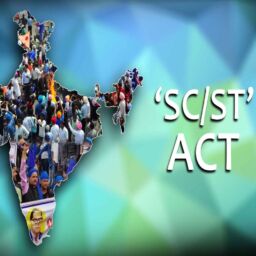SCENARIO OF SSE IN INDIA
It is a profound challenge to meet the 2030 Sustainable Development Goals (SDGs) deadline in India, despite the impressive growth of the private sector and non-profit organizations operating in the social sector. 17 member countries are required to adhere to the SDGs, such as peace, justice, and quality education. India ranked 131st out of 189 countries on the Human Development Index 2020, with a score of 0.645[1]. It is estimated that there are over a million non-profit organizations in India that contribute to the country’s HDI and GDP. Social enterprises and welfare groups aim to improve the quality of life in the country. In order to comply with their obligations, they must therefore be provided with sufficient financing, financial assistance, or subsidies.
CONCEPT OF SSE FOR INDIA
Indian corporations (including private and public companies), social enterprises, volunteer groups, and others collaborated during the pandemic. They gave resources to society’s most vulnerable groups, such as migrants, healthcare services to individuals living in distant locations, and financial access to women, among other things. Grants from the government or other organizations, contributions, CSR spending, and monies earned from charity events held by large corporations are the key sources of their income. The resources they have available are not enough to meet their needs. Due to this, it is imperative that these organizations have access to more funding. In essence, SSE is not only a place to list securities or other funding structures, but also a set of procedures that filter out all entities that are not only creating social impact but additionally reporting that impact. The SSE will operate independently within the existing stock exchanges. SSE will not only benefit social entrepreneurs but also retail investors who wish to participate in the social sector somehow.
EVOLUTION OF SSE IN INDIA
The Hon’ble Finance Minister announced in her Union Budget speech for the year 2019-20 the creation of a Social Stock Exchange (SSE) under the regulatory ambit of SEBI, where social enterprises and voluntary organizations work for realizing social welfare objectives can be listed and raise capital as equity. It gained traction during the epidemic of COVID-19, highlighting the importance of social capital in alleviating the negative consequences on the most vulnerable. Under the chairmanship of Shri Ishaat Hussain, SEBI established a working group (‘WG’) to investigate SSE issues. The WG’s broad mandate was to review and make recommendations on:
- Structures and mechanisms that could be incorporated within the securities markets to facilitate the raising of funds by social enterprises and voluntary organizations;
- The underlying regulatory framework, including the participation eligibility requirements, disclosures, listing, trading, oversight, etc.
In response to the WG’s recommendations on SSE, SEBI set up a Technical Group (‘TG’) headed by Dr. Harsh Kumar Bhanwala with the mandate to analyze and offer recommendations on the following topics:
- Affiliating non-profit organizations (NPOs) and for-profit social enterprises (FPEs) as well as defining for-profit social investing/enterprises on the SSE.
- Standardizing financial reporting, governance and operational performance, and social impact reporting and disclosure standards for NPOs and FPEs on the SSE.
- Regulations of social auditors, eligibility standards, and other intermediaries, such as information repositories and their required Self-Regulatory Organizations (SRO).
Stock Exchanges that have social impact and aim as their main goal is eligible for SSE. Three filters, including target population, activities completed, and volume of activities, are used to determine public benefit. Among the 15 broad categories of social welfare activities listed in the SEBI technical committee report for 2021, it should focus on the underserved and disadvantaged, such as eliminating malnutrition, poverty, inequality, promoting gender equality, education, healthcare, and environmental preservation. A company must qualify as a qualifying social welfare activity in 67% of its operations to be listed on the SSE[2].
REGULATORY SCHEME FOR SSE
Regulatory requirements for SSEs will not be confined to SEBI, but they must also comply with a variety of other laws, depending on the source of financing or other criteria. The regulatory framework for SSEs will be determined by the source of funding, which will be either domestic or foreign.
DOMESTIC SOURCE
Securities Transaction Tax (‘STT’) must be paid by investors who trade on the SSE, and this will impact the exchange’s volume and liquidity. The investor must also pay Capital Gains Tax on long-term gains arising from the sale of stocks in the SSE. As outlined in Section 80G of the IT Act, the maximum deduction is 10% of gross income, which works as a barrier for willing donors. Also, A proposal by the working group calls for first-time retail investors to qualify for a 100% tax exemption for investing up to Rs. 1 lakh in an SSE mutual fund. An organization must meet several requirements to be registered under Section 80 G, 12A/12AA, and at the time of its re-evaluation every five years. NPOs must fulfil specific requirements for registration under Sections 80G and 12A/12AA, including their business type, revenue, etc. Moreover, the SSE platform would be a violation of the criteria if it was used to trade NGOs’ securities.
FOREIGN SOURCE
The Foreign Contribution (Regulation) Act, 2010 (‘FCRA’) defines foreign source as share capital donated by non-residents in a Section 8 Company, as defined in clause (j) of Section. All contributions received from foreign sources are governed by the Foreign Contribution Regulation Act. Moreover, it is prohibited to invest any of these foreign contributions in projects or programmes that promise high-profit margins, for example, chits, property, or assets that are not directly linked to the organization’s or association’s stated objectives or aims.
GLOBAL PREVALENCE
Various nations have established their SSE like Brazil’s Socio-Environmental Impact Exchange (BVSA), Portugal, and South Africa’s SASIX, Jamaica (JSSE), the UK, Singapore, and Canada’s Social Venture Connexion (SVX). The concept floated in a boom in these nations but later on faced many challenges and are thus closed for one or similar reasons. By introducing the latest products or securities, these exchanges on the matchmaking platform acted only as information hubs and assisted in finding investor prospects; they did not open up new trading channels for NPOs.[3] Non-profit organizations were encouraged to calculate impact rather than raise money. In addition, not all non-profits have the same chance of participating. Only three out of the seven SSEs set up across the world remain operational. Currently, the SSE of Canada, Singapore, and Jamaica are still active. However, in India, the concept of SSE has been introduced with a broader scope, creating more avenues for NPOs as well as better opportunities for competing for FPEs. It offers not only a platform for trading equity instruments but also debt instruments.
CONCLUSION
For-profit businesses do not seem to get their own exchange. Instead, for-profit businesses should make use of existing legislation, platforms, tax incentives, and infrastructure to avoid duplication. However, the technical group’s recommended SME exchange in India has failed to attract investors due to a variety of reasons, including a lack of awareness among both investors and listers, a narrow set of qualifying criteria, high listing fees, and a complex listing process[4]. To increase demand for social impact-related investments, the technical group suggests using the Capacity Building Fund to educate and sensitize investors. As the Capacity Building Fund works to equip organizations to use the SSE to their benefit, it also needs to build a robust donor base to support the nonprofits that are listed on the SSE. As the plan is implemented, the delicate balance between controlling non-profits so they do not abuse the flexibility they have been granted and allowing them to raise funds by going beyond a limited set of easily verifiable objectives needs to be carefully navigated.[5] For now, a Social Stock Exchange only exists in theory. To ensure the proposed SSE is a success, every effort should be aimed at ensuring a regulatory framework that permits the least amount of compliance burden for businesses, social entrepreneurs, and investors.
Author(s) Name: Aathira Pillai (University of Mumbai)
References:
[1] Hdr.undp.org. n.d. Human Development Reports | United Nations Development Programme. <http://hdr.undp.org/en> Accessed 22 December 2021
[2] The Financial Express. n.d. Social stock exchanges in India: Can they help lift the underserved? <https://www.financialexpress.com/market/social-stock-exchanges-in-india-can-they-help-lift-the-underserved/2350675/> Accessed 22 December 2021
[3] Icsi.edu. 2021. Chartered Secretary. [online] Available at: <https://www.icsi.edu/media/webmodules/linksofweeks/ICSI-October_2021.pdf> Accessed 24 December 2021
[4] India Development Review. n.d. Are we moving towards a truly ‘social’ stock exchange? | IDR <https://idronline.org/article/philanthropy-csr/are-we-moving-towards-a-truly-social-stock-exchange/> Accessed 24 December 2021
[5] Mint. Social stock exchanges offer us a chance to invest in our future. <https://www.livemint.com/opinion/online-views/social-stock-exchanges-offer-us-a-chance-to-invest-in-our-future-11630429155171.html> Accessed 24 December 2021















